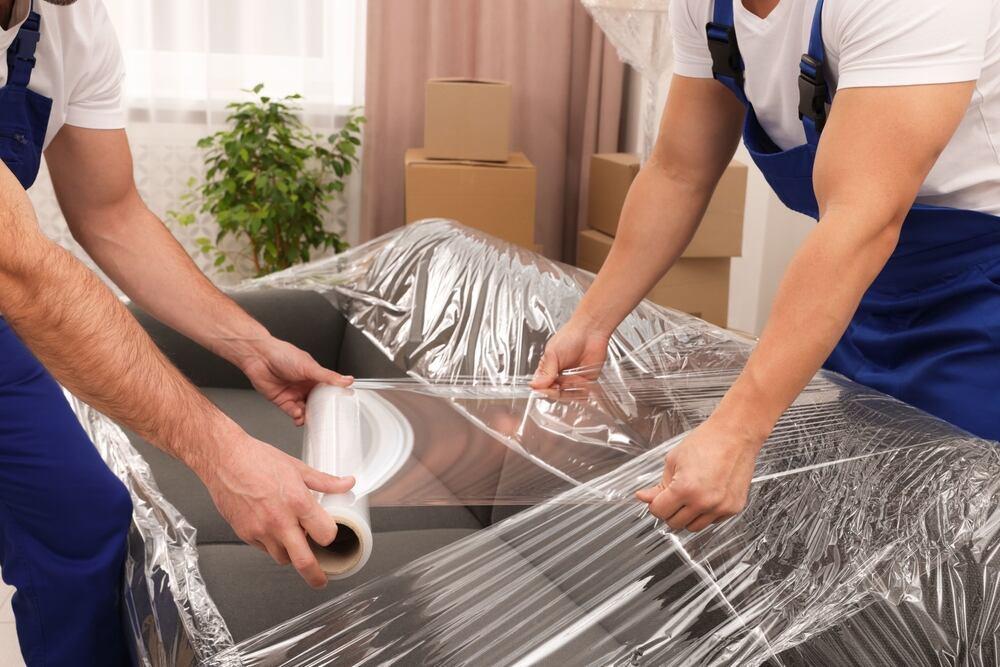How do you pack a sofa for transport?
Published by Joe Webster

To pack a sofa for transport, start by covering the couch with moving blankets, ensuring all parts are fully covered, including for sleeper sofas where the bed should be secured to prevent shifting. Secure these blankets in place by wrapping packing tape around the couch. This method protects the sofa from damage and makes transport safer and more efficient.
Packing a sofa for a move can be a daunting task given its size and vulnerability to damage. A sofa's framework might be robust, but its upholstery requires careful handling to avoid tears, scratches, or structural damage. The key to a successful move lies in the proper preparation and packing of your sofa, using quality materials like moving blankets, packing tape, and possibly a furniture dolly for easier handling. This preparation not only protects your furniture during the move but also simplifies the transportation process, reducing the risk of damage to both the sofa and your property. By following a systematic approach, you can ensure your sofa arrives in its new home in the same condition it left.
Gathering the Necessary Materials for Sofa Packing
Gathering all the items before packing your cherished sofa is crucial. Safe moving requires high-quality packing materials. Bubble wrap, cardboard edges, and stretch film protect furniture from scratches, dents, and other damage. Corrugated solid cardboard sheets protect sensitive areas, and packing tape keeps everything in place throughout travel.

In addition to packing materials, two to three furniture blankets may provide further protection. Each of these soft pads can protect your sofa from moving scuffs. Moving a hefty sofa without a dolly can be backbreaking. Finally, if your sofa is big, plastic covers may be needed to prevent dust and filth during the relocation. Packing goods businesses or professional movers can provide a packing kit with all these materials.
Preparing the Sofa for Packing
Before packing, you must carefully clean your furniture. Despite its difficulty, households typically need to pay more attention to it in the rush to move. Clean a sofa before packing to remove dust, filth, and any pests that may have settled into the upholstery. This requires a vacuum with an upholstery attachment. Specialized fabric cleaners or mild detergents can remove stubborn stains.
After cleaning, preserve the sofa during transit. Covers, blankets, bubble wrap, and shrink wrap can protect your sofa. It's essential to add the material to the sofa's fabric. Bubble wrap may be too abrasive for delicate fabrics, but leather sofas can handle it. Packing tape should be used to keep these covers or wraps in place during the relocation.
Disassembling Your Sofa for Easier Transport
Moving a large sofa through tiny corridors, steep staircases, and small doorframes can be scary. Sofa disassembly simplifies this operation, making your sofa easier to handle and lowering the chance of wall and floor damage. If you're moving with a smaller car, sofa disassembly can help you transfer your sofa.
The cushions, legs, and even arms of your sofa must be removed to disassemble. To do this job well, you need flathead or Phillips screwdrivers, wrenches, and pliers. Labeling each disassembled item is essential for a seamless reassembly at your new site. Handling this task carefully can protect your sofa and make it easier.

Frequently Asked Questions
Properly packing your sofa for transport protects it from any damage during the move. It also makes it easier to handle and load onto your moving vehicle.
Packing your sofa requires bubble wrap, plastic wrap, moving blankets, packing tape, and possibly a furniture dolly. These materials will ensure that your sofa is well protected during its move.
To prepare your sofa for packing, you should first clean it thoroughly. Then, remove any loose items like cushions or pillows. Afterward, wrap the couch in couchkets to protect it from damage during the move.
Start by removing any loose cushions or pillows. Next, look for any removable parts like legs or armrests. Be sure to keep all screws or hardware in a safe place. Once the sofa is disassembled, wrap each piece separately for added protection.
If disassembling your sofa isn't an option, wrap it thoroughly using moving blankets and secure it with packing tape. You may also need to measure doorways and hallways ahead of your move to ensure they fit through.

